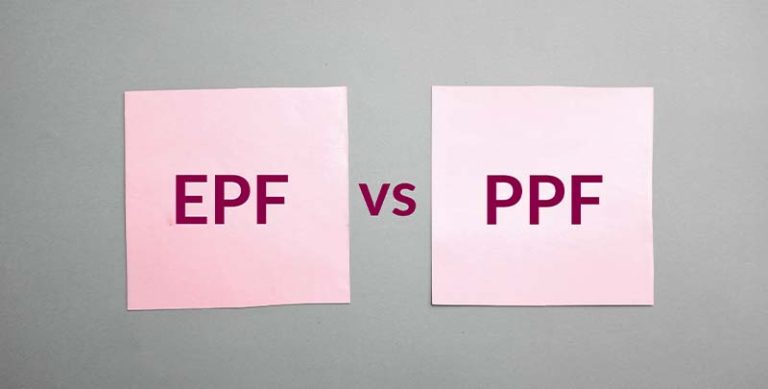When it comes to saving for the future in India, two of the most popular options are the Employees’ Provident Fund (EPF) and the Public Provident Fund (PPF). Both of these government-backed savings schemes are designed to help individuals secure their financial future, but they cater to different needs and have distinct features. Understanding the key differences between EPF and PPF can help you make an informed decision about where to invest your money.
1. Nature of the Scheme
- EPF (Employees’ Provident Fund): The EPF is a retirement savings scheme primarily for salaried employees. It is managed by the Employees’ Provident Fund Organisation (EPFO) under the Ministry of Labour and Employment. Contributions to the EPF are made by both the employee and the employer, ensuring that employees save for their retirement.
- PPF (Public Provident Fund): The PPF is a long-term savings scheme that is open to all Indian citizens, including salaried individuals, self-employed people, and even minors. Managed by the Ministry of Finance, PPF provides individuals with the opportunity to save for their future and earn tax-free returns.
2. Contribution and Amount
- EPF: The contribution to EPF is a percentage of the employee’s salary, usually 12% of the basic salary and dearness allowance. The employer also contributes an equal amount, but a portion of the employer’s contribution is directed towards the Employee Pension Scheme (EPS).
- PPF: In contrast, the PPF requires a minimum contribution of ₹500 per year and a maximum of ₹1.5 lakh per year. The contribution can be made in a lump sum or through periodic installments, and the individual has full control over the amount and frequency of contributions.
3. Interest Rate
- EPF: The interest rate on EPF is determined by the government and is revised annually. For the financial year 2023-2024, the EPF interest rate is set at 8.15%, which is relatively higher compared to many other fixed-income investments.
- PPF: The interest rate on PPF is also set by the government and is subject to change every quarter. As of now, the PPF interest rate is 7.1% per annum. The returns are compounded annually, making it an attractive long-term investment option.
4. Tax Treatment
- EPF: Contributions to EPF are eligible for tax deductions under Section 80C of the Income Tax Act. The interest earned on EPF is also tax-free, provided the employee has completed at least five years of continuous service. The amount withdrawn at the time of retirement is also tax-exempt.
- PPF: The PPF offers a similar tax advantage. Contributions are eligible for tax deduction under Section 80C, and the interest earned is completely tax-free. Additionally, the entire maturity amount, including interest, is exempt from tax under Section 10(11).
5. Withdrawal and Lock-in Period
- EPF: The EPF has a longer lock-in period, as it is intended to be a retirement fund. Generally, EPF balances cannot be withdrawn before the employee reaches the age of 58, except in cases of job loss or retirement. However, partial withdrawals are allowed for specific purposes like housing, medical emergencies, or education.
- PPF: The PPF has a lock-in period of 15 years, but partial withdrawals can be made from the 7th year onwards. After 15 years, the account can be extended in blocks of 5 years. PPF is a more flexible option for those looking for long-term savings with access to funds during the tenure.
6. Risk and Safety
Both EPF and PPF are considered safe investments because they are backed by the government. However, the EPF involves some degree of risk in terms of fluctuations in the employer’s contribution, especially if the employer is not financially sound. PPF, being entirely government-managed, is completely risk-free.
Conclusion
The choice between EPF and PPF depends largely on your employment status and financial goals. If you’re a salaried individual looking for retirement savings with employer contributions, EPF is a better choice. On the other hand, if you’re looking for a long-term, tax-efficient investment with flexibility and full control over your contributions, PPF is ideal. Both schemes offer great benefits, so understanding your financial needs and planning accordingly is essential.

